Tuxpan, Veracruz 作者: 来源: 发布时间:2021-07-22
1.Basic data
Pop.: 143,362 (aprox.)
Area: 1,061.9 km2
Elev.: 10 masl
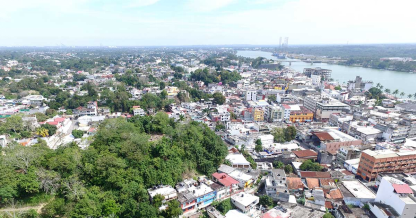
2. Natural geography
Its soil is of the feozem, gleysol, regosol and vertisol type, the first has a dark surface layer, soft and rich in organic matter, the second has bluish, greenish or gray colors, the third is characterized by not presenting different layers and being light , and the latter has wide and deep cracks in times of drought.
The vegetation of the municipality is of the high tropical forest type, evergreen. There are trees such as oak, ash, willow, poplar, and sapodilla and mahogany predominate. Mahogany and gum farms were located in these regions.
In the municipality there is a great variety of wild animals, among which are the rabbit, armadillo, raccoon, badger, ounce and quail; vipers of: coralillo, mazacuate, four noses, flying and chirrionera, as well as a great variety of insects.

Weather
Tropical monsoon climate, occasionally also known as a tropical wet climate or tropical monsoon and trade-wind littoral climate in climate classification, is a relatively rare type of climate. Tropical monsoon climates have monthly mean temperatures above 18°C (64°F) in every month of the year and feature wet and dry seasons, as Tropical savanna climates do. Unlike tropical savanna climates however, a tropical monsoon climate's driest month sees less than 60 mm (2.36 in) of precipitation. Also a tropical monsoon climate tends to see less variance in temperatures during the course of the year than a tropical savanna climate. This climate has a driest month which nearly always occurs at or soon after the "winter" solstice for that side of the equator.
The Köppen Climate Classification subtype for this climate is "Am". (Tropical Monsoon Climate).
The average temperature for the year in Tuxpan is 75.0°F (23.9°C). The warmest month, on average, is June with an average temperature of 82.0°F (27.8°C). The coolest month on average is January, with an average temperature of 65.0°F (18.3°C).
The average amount of precipitation for the year in Tuxpan is 52.1" (1323.3 mm). The month with the most precipitation on average is September with 10.1" (256.5 mm) of precipitation. The month with the least precipitation on average is February with an average of 0.8" (20.3 mm). In terms of liquid precipitation, there are an average of 92.6 days of rain, with the most rain occurring in September with 15.7 days of rain, and the least rain occurring in February with 1.4 days of rain.
https://www.weatherbase.com/weather/weather-summary.php3?s=4667&cityname=Tuxpan%2C+Veracruz%2C+Mexico&units=
Getting there and around
The best way to get from Tuxpan to Veracruz is to fly which takes 4h 29m and costs $2500 - $3200. Alternatively, you can bus via Puebla, which costs $1400 - $2400 and takes 15h 1m.
There is no direct bus from Tuxpan to Veracruz. However, there are services departing from Tuxpan and arriving at Veracruz via Ciudad Guzmán and México Central Norte. The journey, including transfers, takes approximately 16h 31m.
Aeromar, Volaris and Aeroméxico fly from Tuxpan to Veracruz twice daily. Alternatively, you can take a bus from Tuxpan to Veracruz via Ciudad Guzmán, Guadalajara, Guadalajara Portales, ACN Puebla, and Puebla in around 15h 1m.
https://www.rome2rio.com/s/Tuxpan-Jalisco-Mexico/Veracruz
3. Industry
Farming
The municipality has a total area of 75,812,448 hectares, of which 58,339,104 hectares are sown in the 4468 production units. The main agricultural products in the municipality and the area harvested in hectares are as follows: 3,800 corn, 500 beans and 100 chili, and 8,134 orange. In the municipality there are 1,812 rural production units with forestry activity, of which 44 are dedicated to timber products.
Cattle raising
It has an area of 80,684 hectares dedicated to livestock, where 3,428 rural production units are located with the activity of breeding and exploitation of animals. It has 74,500 head of dual-purpose cattle, in addition to raising pigs, sheep, horses. Poultry and apicultural farms have certain importance.
Fishing activity
Its development has allowed the creation of cooperatives, 2 docks and 2 piers.
Industry
Industries have been established in the municipality, among which we find the Integral Port Administration of Tuxpan S.A. de CV, DEMESA, ExxonMóbil México, TOMZA, SWECOMEX, CICSA, among others, dedicated to the construction of platforms and storage of bulk, steel, etc., But also, it is strategically located in relation to the Chicontepec paleoncanal, adjacent to deep and shallow waters, where there are possibilities for the exploitation of hydrocarbon derivatives. Here approximately 20% of electricity is generated nationwide, through the Adolfo López Mateos Thermoelectric Plant and the Tuxpan II, III, IV and V Combined Cycle Power Plant, built with Japanese technology through Mitsubishi Heavy Industries. installed independent production already exceeds 10,000 megawatts. There are investors such as Carlos Slim, Roberto Hernández Ramírez, companies like ICA, immersed in the construction of platforms, the Mexico-Tuxpan highway, among others.
65% of the gasoline consumed in the Valley of Mexico is introduced through this port area, 10 million 600 thousand tons of cargo are mobilized in this area, the vast majority of them correspond to fuel for Petróleos Mexicanos and fuel oil for the Federal electricity commission.
Port of Tuxpan II Project
Currently with a private investment of 6,526 million pesos, the logistical development of the port of Tuxpan II began, a project that would place it as the best port in the Gulf of Mexico in the coming years, this port is strategic due to its routes of Communication such as the Mexico-Tuxpan Highway will be only 2.5 hours to Mexico City and the Tuxpan-Tampico Highway is in the project, the latter is in the design stage. These communication channels reduce the times of the transfer of goods.
This work will be located on 300 hectares on land and 586 on water. The work stated in a statement, will consist of two stages: in the first, the container terminals, multiple uses, fluids and oil and derivatives will be built.
In the second stage, there will be bulk, containers and 16 docking positions for large-draft vessels.
4. Touristic sites
Beaches
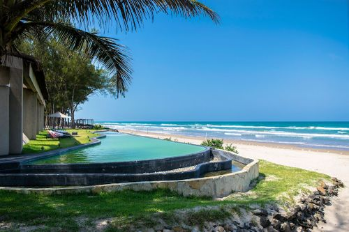
Just 11 kilometers from the city center are the beaches and 80 kilometers away is Cabo Rojo, which offers the visitor reef diving. Another of the beaches near this town is Tamiahua, at a distance of 40 kilometers from Tuxpan, distinguished by its estuaries, lagoons, beaches, islets and bars. Its lonely beaches, islands of indescribable beauty, lagoons and estuaries make this the ideal place to practice diving, fishing or simply admire nature. North of Tuxpan is Playa Norte and Galindo, here there is an impressive natural spectacle such as dolphin watching and diving in nearby reefs. You can stroll through the beautiful estuaries and practice sport fishing. South of Tuxpan is San José and Villamar, where you can practice sailing, motor boating, diving and fishing.
Isla de Lobos
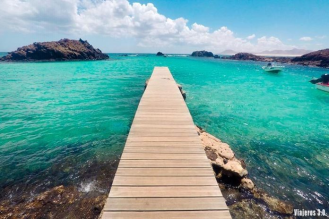
In the area near Lobos Island, which is located about 80 kilometers north of Tuxpan there are several reefs and in the place the climate and sea conditions are the most suitable for diving, it is recommended both for certified divers and for who will have the experience of their first dive. There is a ship that is 200 years old at the bottom of the sea and the site is preferred by divers. The crystal clear waters of Lobos Island are framed by exotic palm trees and pastures very well cared for by personnel from the Mexican Navy; in addition to a splendid lighthouse, which gives a unique aspect to this beautiful piece of land in Veracruz.
Mexico-Cuba Friendship Museum
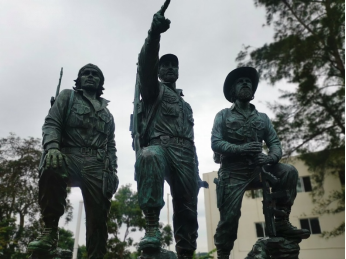
The building that houses it was the house-room of Cuban expedition members belonging to the July 26 Movement, who acquired it as a condition when they obtained the Granma yacht. With the triumph of the Cuban Revolution in 1959, the house is abandoned. In 1976 the Government of Veracruz confiscated it and during Fidel Castro's visit, on December 4, 1989, he handed it over to the community and inaugurated it as a museum. Since then, it has exhibited a series of photographs, busts, uniforms and other objects related to the Cuban Revolution. Access to the museum is free, there are guides who tell the complete story of Fidel's departure and some anecdotes from the time. On weekends bohemian nights are organized, with the participation of local artists and guests.
Regional Museum of Archeology of Tuxpan
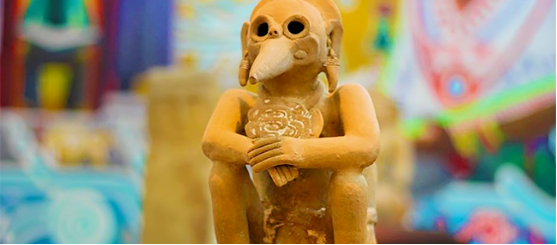
This museum houses a collection of archaeological pieces from the Huasteca and Totonac cultures from the Middle Preclassic (1200 BC-AD 200) to the Early Postclassic (900 AD-1200 AD). C.). It has two rooms: the multipurpose room, where a mural by the Papanteco master Teodoro Cano is exhibited, in which the fusion of the Huasteca and Totonac cultures is represented; in addition to the archaeological room. From the mid-sixties to 1980, the collection of this museum was exhibited in the area that currently occupies the Civil Registry of the Municipal Palace; it was later relocated to Parque Reforma. It was inaugurated as a museum in 1985 and reopened in 1998.
5. History and Culture
The city was founded by groups of Huastec origin that inhabited the area and under Nahuatl rule (around the year 1000) it acquired the name "Toch-pan", which means "place of rabbits".
The first description of Tuxpan was made by Bernal Díaz del Castillo in his True History of the Conquest of New Spain. Due to frequent flooding, the town was moved from the right bank of the river, where it was originally founded, to the left bank, where it currently remains. The population of Tuxpan is of Pre-Columbian origin, it is located in different places of the current one. The pre-Hispanic town was located on the right bank of the river mouth, where there were "Cues", covered with stones, a place called "Tabuco".
In 1518 Juan de Grijalva discovered the Huasteca, found the Cazones and Tuxpan rivers, arrived at the Tanhuijo, which the Spanish called Canoas (today Tamesí) where they had a confrontation with the natives.
It is known that by the year 1700 there was a displacement caused by the siege of pirates, who attacked them in search of women, food and liquor. Its inhabitants fled to the interior of the river, some two leagues upriver, where it was known as Santa Cruz de la Rivera, where given the conditions they were also attacked by buccaneers; reason that forced the inhabitants to look for a better location, a site that was excellent from the point of view of defense; The inhabitants crossed the river and took shelter between the hills, and these served as watchtowers and fortresses, in addition their streets were deliberately built narrow and winding with their ups and downs between the hills to make a new invasion attempt impossible; the population was instinctively called Tabuco, Santa Cruz de la Rivera, Santa María, Puerto de Santa María, La Asunción and Tuxpan.
From the year 1550 Tuxpan or Tabuco was commandery of Don Andrés de Tapia and by the year 1610 he already had a fishery in Tabuco.
In colonial times, the territory that today occupies Tuxpan and its surrounding region, belonged to the province of Pánuco and from the end of the first decade of the seventeenth century, English, French and Dutch ships abounded, on the lookout for Spanish ships and that, Less careless, they disembarked in few sheltered ports such as Tuxpan, then called Tabuco.
With the creation of the quartermaster system that replaced that of the provinces, proposed by the Bourbon reforms that came into force from 1767, it was intended to order the internal conditions of the Spanish colonies, centralizing the political - administrative and economic activities for the benefit of the metropolis. In this way, the port of Tuxpan-Tabuco fell within the jurisdiction of Huachinango, belonging to the intendancy of Puebla.
·In 1804, the Tuxpan, Tamiahua and Tihuatlán maritime receivers were created. During the independence period, Tuxpan supplied the port of Veracruz in sending supplies for mining to the states of San Luis Potosí, Querétaro, Mexico, Coahuila and Durango, and through it the traditional overseas communication with the highlands was maintained.
·In 1826 Tuxpan was enabled for foreign trade as a receptionist, with this function it prevailed until 1835, when by means of another decree it was closed.
·In 1828, Tuxpan gave up being the capital of Puebla.
·In 1830 the Puebla Congress elevated the town to the category of Villa.
·In 1845 the state was divided and consequently Tuxpan and Chicontepec were included in the department of Puebla.
·In 1847 the United States naval expedition went up the Tuxpan River, the port was the last Mexican plaza in the Gulf area that was taken by the Americans.
·In 1853 the government of Santa Anna decreed the integration of Tuxpan to Veracruz. In 1881 it acquired the category of city; in 1914 it was the provisional capital of the State.
·In 1910 the population census indicates a remarkable development in the head, the number of inhabitants reached 76,225 inhabitants.
·In 1914, the city of Tuxpan de Rodríguez Cano, head of the municipality, was named the capital of the state of Veracruz for a period of three months.
·In 1917, December 17, the electric light was inaugurated.
·On June 20, 1941, the local radio station XETL was inaugurated, the voice of Huasteca, it was the first radio station in the north of Veracruz, being its owner and general manager Mr. Calixto Almazán Barrón and sponsored by the artists of the radio and the cinema the simpar Lupita Palomero and the "crooner" from Mexico Mr. Fernando Fernández and as announcer, the aforementioned Mr. Calixto Almazán, their work began at seventeen hours and ended at twenty-three hours because the The port only had electricity from 17:00 PM to 06:00 AM.
·In 1953 the Cerro de la Cruz began to collapse, where later the building of the "Tuxpan Cinema" was built, serving its material to fill the Jesús Reyes Heroles boulevard.
·In 1962, Tuxpan became the host city of a Catholic episcopate when the Diocese of Tuxpan was created by Pope John XXIII, suffragan to the Archdiocese of Xalapa.
·In 1963, the then president of the republic, Adolfo López Mateos, inaugurated the Tuxpan bridge and in 1968 the toll booth was installed two kilometers from this great work.
·In 1973, it was officially named Tuxpan Puerto de Altura.
By the first half of the 19th century, Tuxpan had become the urban and political center of the region, there were more than 650 houses in which 2,500 people lived, during the Porfiriato in the development of the oil industry, Tuxpan played a role Of great importance due to its proximity to the fields, the installation of various companies favored the purchase or lease of large tracts of land, thus also disputes over the territory arose, by the companies: El Águila, La Huasteca Petroleum Company, La Corona, La Penn Mex, La Huasteca or Sinclair and in 1906 Pearson obtained the first concession on May 18.
By decree of June 9, 1955, it was established that its official name would be “Tuxpan de Rodríguez Cano”, in honor of an illustrious politician from the city.
6.Contact Information
City Mayor: Juan Antonio Aguilar Mancha

Contact number: +52 (783) 834 9496, ext. 102
Govt. Office Address: Av. Juárez No. 20. Col. Centro, Tuxpan, Ver.
Twitter: https://twitter.com/AguilarMancha
Facebook: https://www.facebook.com/juanantonio.aguilarmancha
Website: https://tuxpanveracruz.gob.mx
E-mail: presidente@tuxpanveracruz.gob.mx
